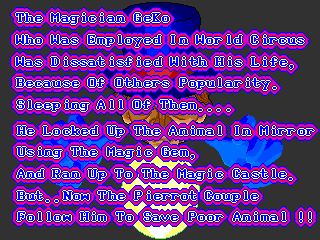
UME is the complete/combined version of the MAME / MESS project.
Official whatsnew texts for (MAME, MESS) provide full details of what has changed since 0.158.
This is based on the official ‘mame0159’ tagged version at GitHub.
UME 0.159 Windows binaries – 32-bit, 64-bit and all tools
(source matches official mamedev.org source distribution, here for completeness)
Other Binaries (if you don’t know what these are you don’t need them)
MAME/MESS split 0.159 Windows binaries – 32-bit, 64-bit and all tools
Windows SDL builds
32-bit SDL MAME / MESS / UME for Windows
64-bit SDL MAME / MESS / UME for Windows
Points of Interest
0.159 could be the point where interesting work being done in the MESS side of the project really overtakes the work being done on the arcade hardware.
Recent work on decapping / reading out MCUs from old electronic toys, as well as lots of work from hap on the CPU core to run them means that those represent some of the more noteworthy pieces of progress in this release. A number of them really need good quality external artwork files if they’re to be fully playable. Obviously the scope for this kind of work, and potential it has is expansive; we might even see a number of the things currently handled by MADrigal’s simulators emulated at a CPU level if they turn out to use MCUs we can read and emulate, and running the original game code is obviously a big step up from simulation of all the game logic.
There are some bits of MAME progress that you might find interesting however, obviously there’s PuzzLove shown below, and Super Miss World (which is an alt version of Miss World ’96) but some of the clones are potentially a bit spicier.
The versions of Asura Buster and Macross II are versions that were sent to Japanese arcade magazines for review and contain built in ‘pause’ functionality when holding down a button (in Asura Buster it’s the otherwise unused Player 1 Button 4, in Macross II the service coin button does the trick rather than adding a credit) I suspect the ‘STOP VERSION’ we see on some CPS2 games has the same meaning (there’s a Vampire Hunter set with it in MAME) although I don’t know the button press for that yet. While these are rare versions of games I don’t think you can call them prototypes, as they’re likely built from the final code, just customized by the original manufacturer for the magazines so that capturing screenshots was easier. A version of Ultra X Weapons was added from the same source, that actually has a newer build date than the existing set, although I’ve left it as a clone due to the likelihood of it being a review build rather than one intended for arcade use. Thanks of course must go to ShouTime for tracking down these rarities.
R.Belmont sums up some Apple 2/3 fixes and improvements that appear in 0.159
Lots of drivers have also had their save states improved in this release in addition to the usual bout of modernizations to bring drivers up to scratch with current standards.
Again in the MESS side the recently added Gamate (obscure handheld system made to compete with the GameBoy) driver has seen a number of fixes, including the addition of sound.















